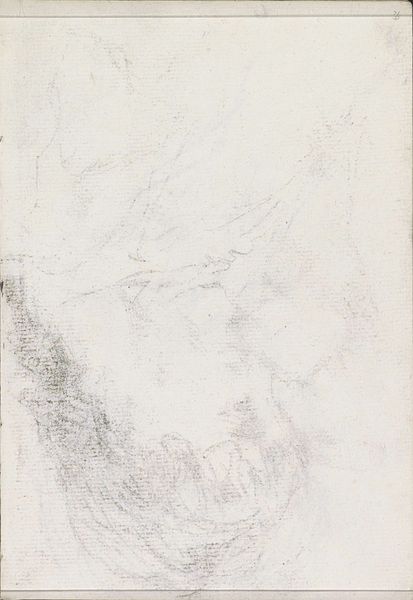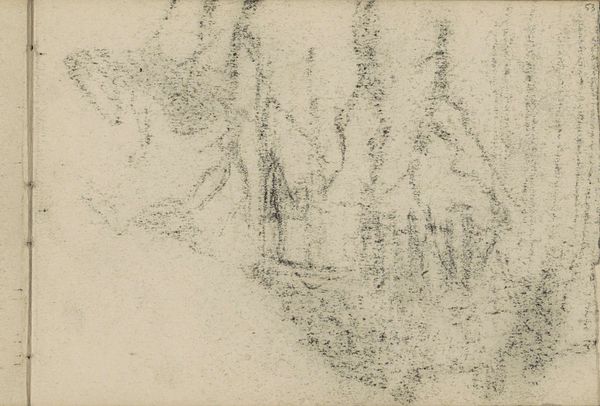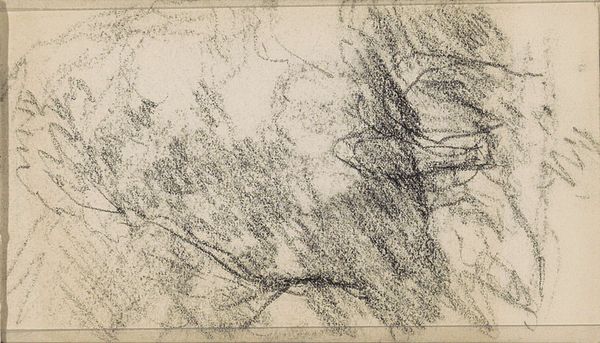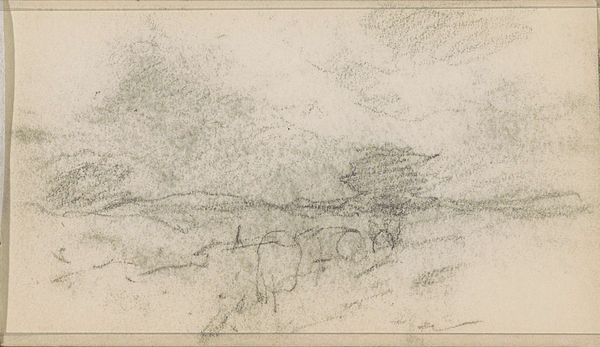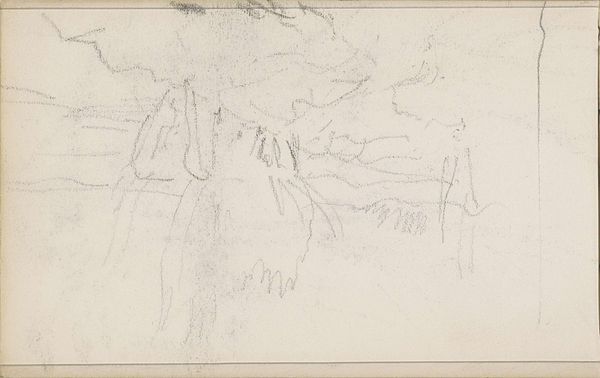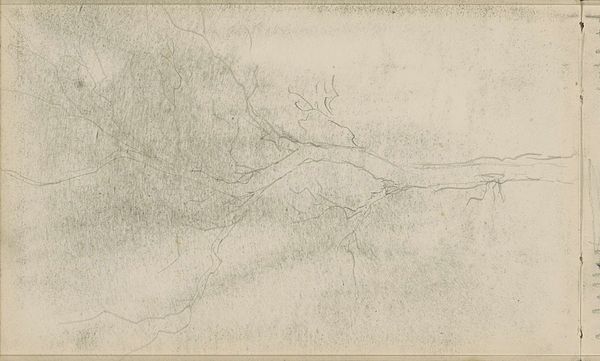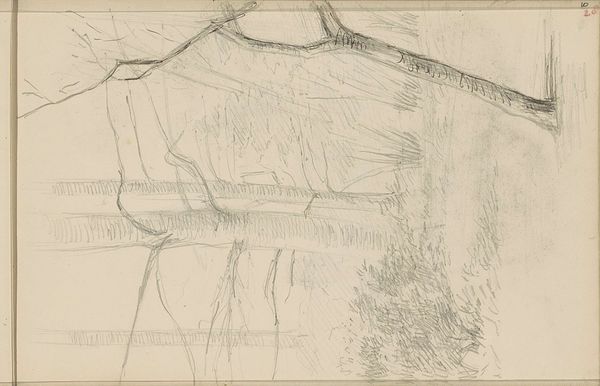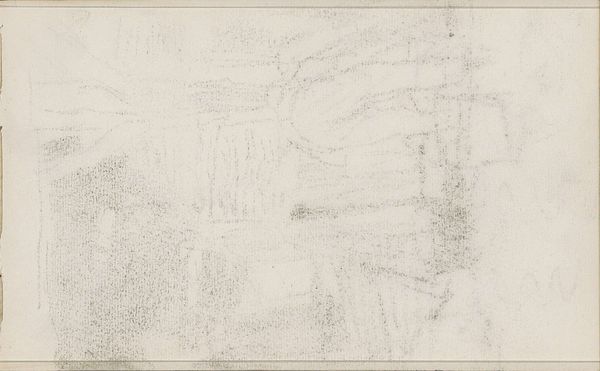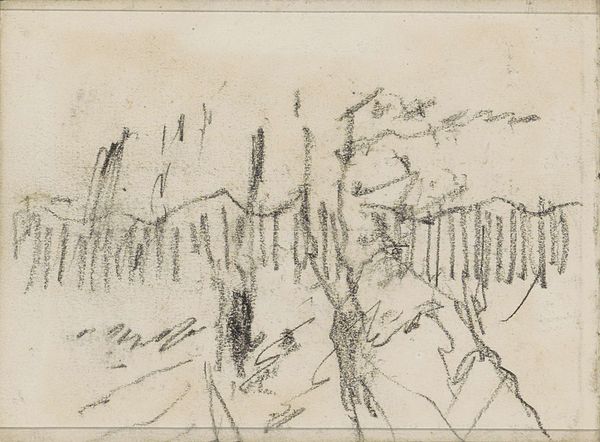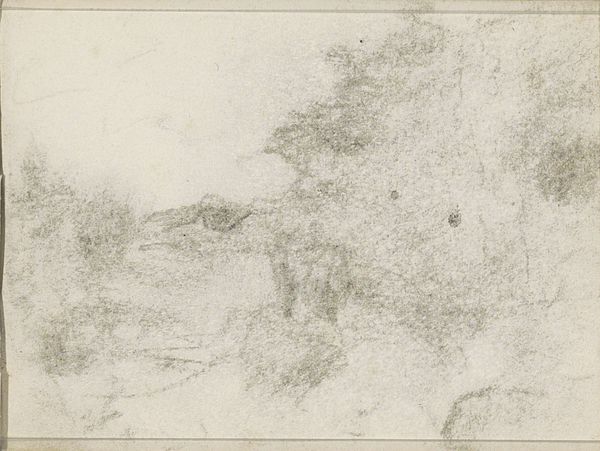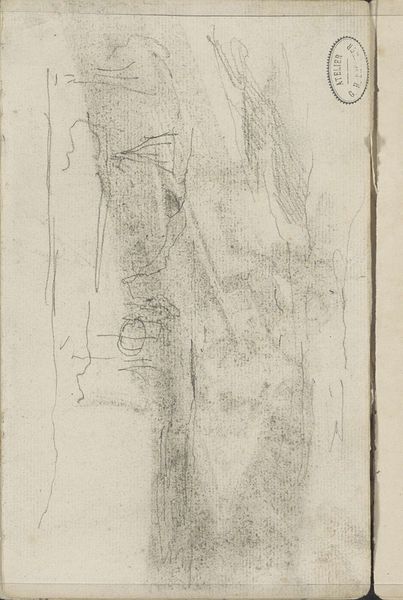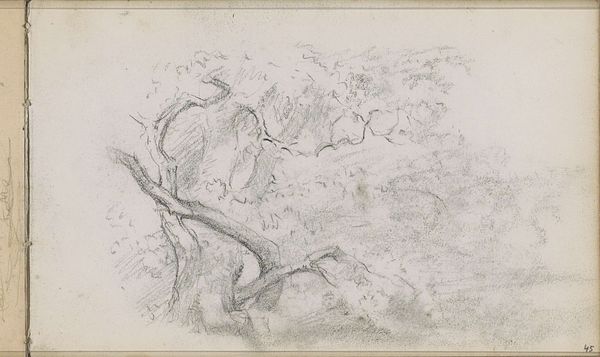
Copyright: Rijks Museum: Open Domain
Curator: This pencil drawing, made sometime between 1875 and 1934, is titled 'Abklatsch van de krijttekening op pagina 58’—essentially, a rubbing or transfer of a chalk drawing on page 58—and is currently held at the Rijksmuseum. It’s attributed to Isaac Israels. Editor: Immediately, I notice how tentative the marks are; there’s a sense of something being fleetingly captured. Almost like a ghostly residue more than a defined representation. Curator: Indeed. Considering the process – a rubbing of an existing chalk drawing - speaks to that. The labour itself is about reproduction, an efficient record rather than initial creation. We might even ponder what function "page 58" served, perhaps as part of a larger body of commercial work. Editor: Good point, which connects it to the broader historical context; the art world during Israels’ time was rapidly industrializing. Could this be a commentary on that, highlighting mass-produced imagery? It's interesting that Israels chooses to work in this way—almost like he’s subverting the preciousness often associated with drawing. Curator: Or perhaps he’s just utilizing the technologies and resources available to him. We need to understand that making a living as an artist at that time was significantly affected by social and political movements such as the reconstruction and urbanization of Amsterdam. Drawing like this was likely one avenue to generate income by visually archiving parts of the process. The medium in this context served a certain role to a growing market for images. Editor: That said, the sketchiness, the visible "hand" despite its reproductive nature, gives it a very impressionistic feel— that pursuit to capture the immediate sensory impression over accurate representation. Which pushes against those commercial aspects. It occupies a fascinating liminal space, don't you think? Curator: Yes, exactly. Israels balances both the desire to serve an industry while trying to establish an identity rooted in craft. Editor: Reflecting on its muted quality and incomplete nature I understand its place within a larger artistic landscape with fresh eyes. Curator: Me too. This drawing encapsulates the dialogue between the industrial and artisanal facets of image-making, that still affect visual media today.
Comments
No comments
Be the first to comment and join the conversation on the ultimate creative platform.
